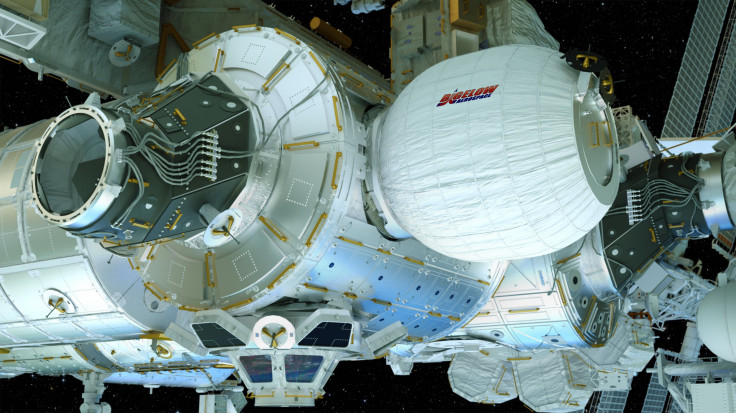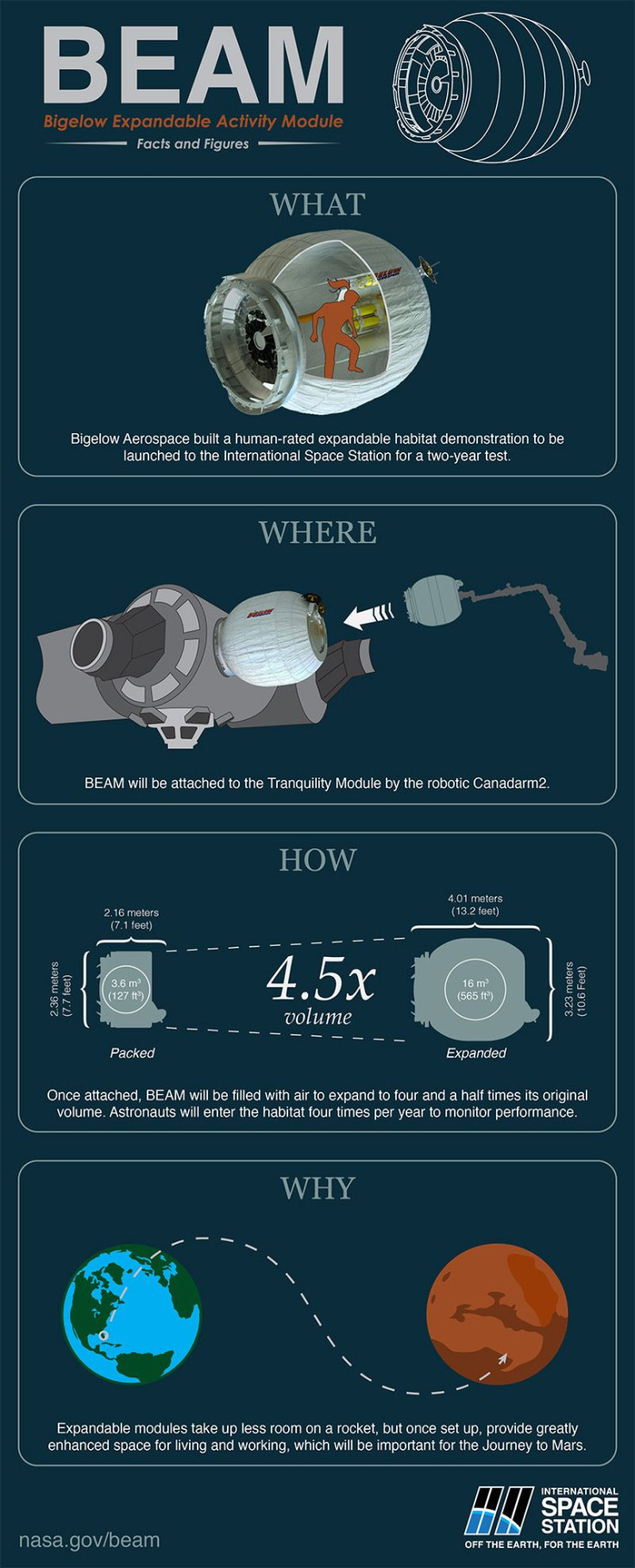An Inflatable Future For Deep Space Exploration Begins With Launch Of Expandable Habitat To The Space Station

Construction in space is an unwieldy process requiring multiple spacewalks, but that could all change with expandable habitats. Bigelow Aerospace will test an inflatable structure attached to the International Space Station, beginning Friday, as part of a $17.8 million contract with NASA. The Bigelow Expandable Activity Module, or BEAM, is an important first step in a planned journey to Mars. Inflatable structures can be easily deployed to reduce the risks astronauts face in traveling to the red planet.
Much like other entrepreneurs, real estate magnate Robert T. Bigelow — owner of the Budget Suites of America hotel chain — had visions of space. He used part of his personal fortune to create Bigelow Aerospace in 1999 with the goal of creating a commercial space station at a fraction of the cost of the multibillion-dollar global effort that is the International Space Station. The answer to this financial conundrum was found in inflatable technology. The goal to create a human-rated expandable habitat that could protect astronauts from space radiation and withstand small debris is a step closer to reality with the launch of BEAM on Friday.
Packed within the SpaceX Dragon spacecraft, BEAM measures 7.7 feet by 7.1 feet and weighs 3,000 pounds. The expandable habitat will be attached to the Tranquility node of the space station using the robotic Canadarm2. When attached it will inflate to a length of 13 feet and a width of 10.6 feet. BEAM consists of two metal bulkheads, one of which is used to attach the habitat to the space station, and an aluminum skeleton that provides rigidity while remaining flexible. Layers of fabric cover the frame of BEAM, with spacing between each layer. Inside the habitat is a restraint layer and a bladder system used to inflate the enclosure in space.
BEAM will be inflated within four months of being attached to the space station, according to NASA. After inflation, astronauts will enter the habitat three or four times a year during the two-year science investigation period. BEAM is equipped with sensors and radiation monitors, which will be operated by crew members. The astronauts will also collect and analyze surface samples for microbial growth. BEAM has two types of radiation monitors, a real-time sensor and a passive sensor that tracks cumulative changes in radiation.
An expandable habitat needs to have enough radiation protection to shield astronauts throughout the duration of a journey to Mars. The red planet itself does not pose a threat, but galactic cosmic rays bombarding the spacecraft are a hazard NASA will have to mitigate in a manned mission. The radiation sensors will determine how well BEAM blocks radiation while in low Earth obit.
#BEAM is all packed for its voyage. Ready #ToBoldlyGo to the @ISS. @NASA @NASAKennedy #BEAMmeupNASA pic.twitter.com/ORzCx54v2a
— Bigelow Aerospace (@BigelowSpace) April 7, 2016
Another concern in any journey to Mars will be micrometeroids or small debris impacts. NASA believes the layers of BEAM will provide as much protection as other space station nodes. Its smaller size will also help reduce impact threat.
If successful, expandable habitats could eventually be used in missions to Mars. Additional testing, such as incorporating equipment and power to such a structure, will be needed prior to such journeys. Expandable habitats could be used as additional nodes in future space station expansions. With NASA's plans to place an asteroid in a safe orbit around the moon, inflatable structures could be established for astronauts who are sent to collect samples from the captured rock. The habitats could also be used to create additional nodes for a spacecraft in a journey to Mars. Once on the red planet, inflatable structures could be quickly deployed to create a base of operations for astronauts to live and work safe from potential hazards.
After two years, Canadarm2 will grapple BEAM to detach it from the space station. Once free, the expandable habitat will float along an orbital trajectory where it will burn up in Earth's atmosphere within a year. The detached BEAM is not expected to be a potential threat to the space station in regard to recontact. Any part of BEAM that survives re-entry is expected to be of no danger to humans or property.

© Copyright IBTimes 2024. All rights reserved.






















